The 2014 state of the environment report provides an assessment of Scotland’s environment and how it is changing. It is based on assessments that have used data from a wide range of sources. It was written by expert authors from different environmental organisations.
Key messages
On the whole, Scotland’s environment is of good quality and there have been many significant improvements in recent years. However, the state of the environment report clearly shows that some habitats and species are under threat, and poor air quality continues to affect some people in our towns and cities.
Over the centuries our landscapes have been moulded by people and the climate, and few untouched, native habitats survive. Nonetheless, Scotland’s iconic environment provides the backdrop for the high quality of life many of us enjoy, and underpins many elements of a successful economy. Conversely, degraded environmental surroundings (often in areas where the poorest members of society live) have negative impacts on our health and happiness.
Our environment provides a wide range of benefits, such as the air we breathe, the food we eat and the water we drink, as well as the many materials needed in our homes, at work and for leisure.
Our land is used for a variety of purposes, and we depend on the soil for producing food and storing carbon. Our seas are biologically diverse and relatively unpolluted, with fishing and energy production amongst their varied uses. In most of the country the state of our freshwater environment is good, and in places this has improved markedly. Air quality meets the necessary standards in most areas, too.
Environmental regulation is generally implemented to an excellent standard, which is reflected in the state of our environment. However, Scotland, like other industrialised economies, has contributed to environmental damage in other parts of the world. Consumerism (our demand for goods, how industry supplies them and how we use and dispose of them) plays a significant role in all the environmental problems we face.
Globally, the biggest challenge to the environment is climate change. Available weather data show that Scotland’s climate has changed over the last 100 years, with drier summers, wetter winters and more frequent heavy rainfall events. We are all making a substantial contribution to this rapid change in climate. A different climate will alter our environment dramatically and significantly affect the lives of everyone in Scotland.
All components of the environment are interlinked and depend on each other to remain in good condition. Below, we have described the quality of the individual major components. More detail on the linkages between them is given in each chapter and topic.
Air
Air quality in urban areas has improved significantly since the 1950s, but there are still some areas of towns and cities where the air quality is of concern. In urban areas, emissions from transport are a significant cause of pollution.
Water
Our freshwaters and seas are generally in good condition, and there have been significant reductions in pollution over the last 25 years. There are still problems resulting in the loss of habitat and wildlife (both current and historic) and from water pollution, predominantly from excessive amounts of nutrients entering the water. Floods and droughts can damage our economy and wildlife and affect our health and wellbeing.
Land
Scotland’s highly diverse landforms, rocks and soils are the foundation of our landscape, wildlife and cultural heritage. Land is used for a variety of purposes, and we have to balance the many demands we make on it.
What we use the land for and how we manage, maintain and improve it are important causes of change. Expanding built developments and the projected growth in forest cover are changing the landscape, and more intense farming practices and how we manage our towns are altering habitats and wildlife.
What is being done
Action to address these varied problems is being taken; for example, through the Land Use Strategy, National Marine Plan, Climate Change (Scotland) Act, Water Framework Directive River Basin Management Plans and the Scottish Biodiversity Strategy.
The overarching challenge is to achieve a sustainable balance between short-term needs and maintaining or improving the quality of our environment for future generations.
Reducing our impact on the environment is complex and can only be solved by public organisations, businesses, non-governmental organisations, research organisations and the public working together.
The Scottish Environmental Monitoring Strategy has been developed by CAMERAS (Co-ordinated Agenda for Marine, Environment and Rural Affairs Science) and aims to co-ordinate environmental monitoring across Scotland, to make it more efficient and cost effective. The strategy encourages the development of a series of monitoring actions plans (MAPs). The first phase of MAPs are being developed: a Soil MAP and implementation plan have been published; a Freshwater MAP has also been completed; an Air MAP is being developed. Other MAPs will follow in due course.
What is the state of the environment report
The 2014 state of the environment report provides an assessment of Scotland’s environment and how it is changing. It uses the most recent data available from a wide range of sources. It was written by authors from different environmental organisations, and was overseen by the editorial group.
The editorial group aims for the report to be:
- impartial;
- trustworthy and evidence-driven;
- engaging, inviting and accessible;
- open to challenge.
We hope that you will be able to find the information you need. The overall key points are provided, and there are five main chapters.
- Air
- Land
- Water
- Climate
- People and the environment
Every chapter has key messages and a range of individual topics, each covering part of the environment. See the state of the environment reports downloads section below.
In each topic we describe the condition (state) of that part of the environment and how it is changing. We assess the pressures causing the changes and consider what is being done to solve any problems. For many of the topics, we brought together a group of specialists to summarise the state and trends, and their assessments are shown at the start of each topic. As with any scientific report, we are limited by the available evidence and as a result there may be gaps in our coverage of some environmental issues.
We have referenced all the major points by providing links to sources of information and data, so you can check the facts yourself. In some topics there are links to relevant data analysis applications, where you can interrogate the data at first hand.
Each page of the report shows the date it was last reviewed and updated. We intend to keep the report current, including new data and information as they become available. The report will be comprehensively reviewed in 2016. It should be cited as Scotland’s state of the environment report, 2014, and the author as the Scotland's environment web partnership.
We’d like your help to shape future versions of the report. Every page has a link to where you can submit comments; we encourage you to question anything you don’t understand, and challenge anything you don’t believe to be true.
State and trend assessments
The assessments of the state and trend are shown as a series of spectrum diagrams. These show the current condition of the environment covered by each topic as well as the future trend for that environment.
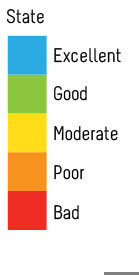
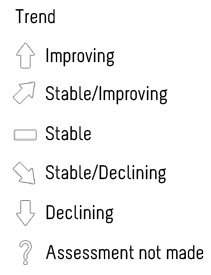
We report how confident we are in these assessments based on the level of agreement between the specialists who took part (high, medium or low agreement) and the evidence available to form that assessment (high, medium or low evidence).
How the assessments were made
We contacted specialists with knowledge of each topic and asked them to take part in the assessments. The specialists came from a range of organisations across Scotland, including universities, public organisations, the Scottish Government, local authorities and research institutes. A full list of participants is available below.
We asked the specialists to independently complete a survey to identify the main pressures affecting the environmental topics they were contributing to. They also assessed the current state of those aspects of the environment, based on the Brundtland Commission definition of sustainability: “development which meets the needs of current generations without compromising the ability of future generations to meet their own needs”. The future trend was generally assessed for the time period in which current human activity is likely to have a strong impact.
These independent assessments were collated and a meeting was held for each topic, during which the pressures, state and trend were discussed. The groups then agreed on the final assessment and their level of confidence in the result.
Critique of the approach
These assessments provide a comprehensive review of the state of the Scottish environment and make use of the available evidence and expertise. However, any overall assessment is necessarily a simplification.
Assessments are of the current “average state”; some aspects of the environment covered by a topic will be in a better state, and others worse. Equally, the condition of some areas is improving, while others are worsening or staying the same.
We have taken account of the scale of any damage to the environment in these assessments; impacts can be locally damaging, but may have little effect on a national scale.
The assessments are based on the agreement between the specialists who took part; other specialists may have different opinions.
Who wrote this
The state of the environment report contains many topics, each of them written by a lead author, with contributions from other experts.
The editorial group oversaw the production of the report. Our members represent a number of organisations and a range of skills and experience. We are responsible for ensuring the text is consistent, balanced and accurate. You can read more about us below.
For many of the topics, an assessment of the current state and the future trend was made. The section state and trend assessments explains how this was done. Over 90 specialists took part in the assessment process and came to an agreement on the state and trend of each aspect of the environment. Therefore, the assessment may not fully represent the views of any particular individual.
We are grateful to all who took part and helped to produce the state of the environment report.
Editorial group
| Rebecca Bell |
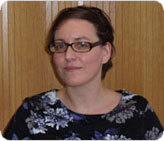 |
BA (Hons), MSc, AIEMA
Chair
Sustainable Scotland Network
|
|
Rebecca is the Chair of the Sustainable Scotland Network, the networking organisation for sustainable development officers in the Scottish public sector. The Sustainable Scotland Network supports the Scottish public sector to work together towards a sustainable Scotland by: coordinating programmes on climate change and sustainable procurement; sharing good practice and supporting collaboration; researching and promoting better solutions; connecting with national and international policy-makers; and providing access to up-to-date news, advice and guidance.
Rebecca's main areas of expertise are strategic environmental assessment (SEA) and sustainable development policy, with current work focusing on embedding sustainable ways of working across Clackmannanshire Council, and on monitoring sustainability performance.
She is currently preparing a new Sustainability and Climate Change Strategy for Clackmannanshire Council.
|
| Dr. Seumas G. Campbell |
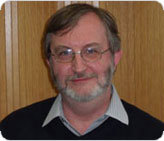 |
BSc, PhD, C Geol, C Sci, EurGeol
Chief Geologist Scotland
British Geological Survey
|
|
Diarmad is responsible for the British Geological Survey’s onshore spatial data capture and 3D modelling programmes in Scotland, and cross-cutting research in the Glasgow area.
He provides a range of geoscience information and advice to decision makers in Scotland. This is especially in support of urban development, regeneration and infrastructure projects, and in relation to a wide range of environmental impacts, including hazards related to landslides.
He has previously been involved in similar work in Hong Kong, and prior to that in projects on the structural controls of mineralisation, especially gold, in Zimbabwe, and the interpretation of ancient volcanic rocks.
|
| Nathan Critchlow-Watton |
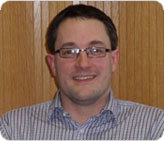 |
BSc, MSc
Chair of SoE Editorial Group
Principal Scientist
State of Environment Unit
Scottish Environment Protection Agency (SEPA)
|
|
Nathan is responsible for co-ordinating monitoring of the water environment, with a particular focus on freshwaters. He also chairs the cross-partner Freshwater Monitoring group, which is tasked with delivering a co-ordinated monitoring network for Scotland.
Nathan produces the annual status assessment for all waters in Scotland, bringing together data from across SEPA and partner bodies and publishing it to inform the public. During the development of this classification system, Nathan worked with partners across the UK and EU to shape the final scheme.
Prior to this post, Nathan has worked as an ecologist in Scotland, England and Wales.
|
| Dr. Karen Dobbie |
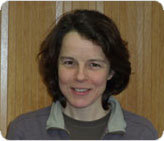 |
BSc, PhD, MISoilSci, CSci
Principal Scientist (Soil)
State of Environment Unit
Scottish Environment Protection Agency (SEPA)
|
|
Karen’s role in SEPA focuses on developing soil / land aspects of Scotland’s environment web and soil monitoring aspects of the CAMERAS Environmental Monitoring Strategy.
Over the last six years, Karen has also worked in SEPA’s Land Policy Unit and Field Chemistry Unit. She was an author and co-editor of Natural Scotland’s state of Scotland’s soil report (2011).
Before joining SEPA, Karen worked for many years as a postdoctoral research fellow at Edinburgh University mainly on greenhouse gas emissions from soils and published a number of peer reviewed papers on a range of topics.
|
| Dr. Daniel Hinze |
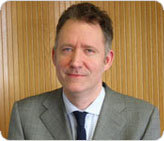 |
Dipl.-Vw., MA, PhD
Head of Environmental Analysis Unit - Rural and Environment Science and Analytic Services (RESAS )
The Scottish Government
|
|
Daniel is head of the Environmental Analysis Unit which supports Climate Change, Environmental Quality and Natural Resource policy.
Daniel joined the Scottish Government in 2003, leaving a post at the Bundesbank in Frankfurt, and has worked in various Government posts, in the Scottish Government’s Office of the Chief Economist, the Scottish Government Health Finance Directorate and, on secondment, in Scottish Water’s regulation team.
|
| Alan Motion |
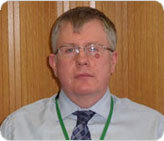 |
Business Manager
Meteorological Office
|
| |
| Karen Robertson |
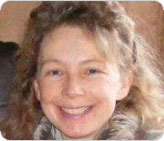 |
BA (Hons), Post Graduate Diploma (GIS)
Senior Research Manager
Historic Environment Scotland
|
|
Karen is a Senior Research Manager for Historic Environment Scotland. Her current work includes writing Scotland’s Historic Environment Audit (SHEA), managing the Buildings at Risk Register for Scotland and providing evidence to support the implementation of the Historic Environment Strategy.
Prior to this post, Karen has worked as good practice manager for the Scottish housing regulator and as an analyst for the Scottish house condition survey.
Karen has a postgraduate diploma in Geographic Information Systems, with a particular interest in geo-demographics.
|
| Dr. Marie Russell |
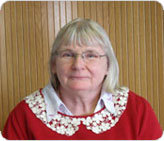 |
BSc, BA, PhD, MRSC
Senior Environmental Chemist
Marine Scotland Science
|
|
Marie is mainly involved in marine environmental issues, particularly in relation to persistent organic pollutants and marine litter. She is the Marine Scotland Science lead on issues relating to marine litter for the Marine Strategy Framework Directive.
She is the Marine Scotland Science Responsible Officer on the Clean and Safe Seas Evidence Group (CSSEG) of the UKMMAS (United Kingdom Marine Monitoring and Assessment Strategy). The evidence group co-ordinates and reviews monitoring and evidence requirements relating to hazardous substances, radioactivity, eutrophication, oil and chemical spills, marine litter, underwater noise, microbiological contamination and algal toxins.
At Marine Scotland Science Marie works in the Marine Environmental Assessment Group, with responsibility for the analyses of organic contaminants. She is also responsible for ensuring that contaminant data from Marine Scotland Science is submitted to the Marine Environment Monitoring and Assessment National (MERMAN) database annually.
|
| James Simpson |
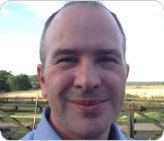 |
BSc, MBA, MICFor
Independent Environmental Services Consultant
Forestry Commission Scotland
|
| James Simpson is a chartered forester with 25 years career experience in ecological science, sustainable forestry and land use. James is currently on a sabbatical from the Forestry Commission, living and working in the Czech Republic. |
| Professor Des Thompson |
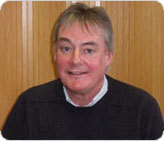 |
BSc, PhD, DSc, FIEEM
Principal Adviser on Biodiversity
NatureScot
|
|
Des manages NatureScot policy and advisory work on ecosystems and climate change.
With particular interests in the uplands and bird ecology, Des has fifteen books to his name on subjects ranging from raptors, shorebirds, vegetation, mountains and moorlands to the changing nature of Scotland. He manages the NatureScot-SEPA PhD studentship scheme, is Associate Editor of the Journal of Applied Ecology, and is currently involved in taking forward the Scottish Biodiversity Strategy to meet ambitious 2020 targets.
Des collaborates closely with researchers and government advisers across the UK, and has strong ties with Norwegian officials. He is also a Trustee of the Field Studies Council.
|
| Willie Towers |
 |
BSc
Senior Soil Scientist
The James Hutton Institute
|
|
Willie is a soil scientist whose early career was to map and characterise the soils in the north of mainland Scotland. This gave him the grounding to undertake applied research into diverse topics such as native woodland potential, waste recycling to land and land based renewable energy options for, and in partnership with, a wide range of government teams and agencies. He has produced over 200 publications including 35 refereed papers.
More recently he undertook a short secondment to the Scottish Government to assist in compiling the Scottish Soil Framework and has acted as an advisor to the Government in the re-delineation of Less favoured Areas, including at the House of Lords.
He is an author and co-editor of Natural Scotland’s state of Scotland’s soils report (2011), is a member of Council of the British Society of Soil Science and is chair of the European Soil Bureau Network’s Working Group on Soil Education and Awareness.
|
Authors and contributors
The assessments were made in 2013, since then the affiliations of individuals to organisations may have changed.
|
Aileen Armstrong - NatureScot
Alexander Downie - SEPA
Alan Motion - Met Office
Colin Gillespie - SEPA
Cameron Maxwell - Forestry Commission Scotland
Diarmad Campbell - British Geological Survey
Daniel Hinze - The Scottish Government
Davy McCracken - SRUC
Des Thompson - NatureScot
Emma Goodyer - SEPA
Eric McRory - SEPA
Fiona O'Mahony - NatureScot
Gordon Patterson - Forestry Commission Scotland
Janet Khan - SEPA
James Simpson - Forestry Commission Scotland
Jon Molyneaux - Zero Waste Scotland
Karen Dobbie - SEPA
|
Karen Robertson - Historic Environment Scotland
Kathryn Gilchrist - The Scottish Government
Kathryn Goodenough - British Geological Survey
Linda Gateley - The Scottish Government
Laura Ripper - Copy editor
Marie Russell - Marine Scotland
Mel Van Niekerk - SEPA
Michael Montague - SEPA
Nathan Critchlow-Watton - SEPA
Paul Butler - SEPA
Peter Rawcliffe - NatureScot
Rachel Wignall - SEPA
Rebecca Badger - SEPA
Rebecca Bell - Sustainable Scotland Network
Scot Mathieson - SEPA
Willie Towers - The James Hutton Institute |
State and trend assessors
The assessments were made in 2013, since then the affiliations of individuals to organisations may have changed.
Rebekka Artz
The James Hutton Institute |
Hugh Barron
British Geological Survey |
Ian Baxter
University Campus Suffolk |
Andrew Bloodworth
British Geological Survey |
Francis Brewis
The Scottish Government |
Andrea Britton
The James Hutton Institute |
Rob Brooker
The James Hutton Institute |
Mike Browne
GeoConservation UK |
| Patricia Bruneau NatureScot |
Lin Bunten
Scottish Environment Protection Agency |
Andrew Burke
Historic Environment Scotland |
Claire Campbell
Scottish Environment Protection Agency |
Diarmad Campbell
British Geological Survey |
Laurence Carvalho
Centre for Ecology and Hydrology |
Mary Christie
NatureScot |
Andrew Coupar
NatureScot |
Nathan Critchlow-Watton
Scottish Environment Protection Agency |
Tom Dargie
Boreas Ecology |
Jim Densham
Royal Society for the Protection of Birds |
Karen Dobbie
Scottish Environment Protection Agency |
Martin Downing
Wardell Armstrong |
Willie Duncan
Scottish Environment Protection Agency |
Teresa Fernandes
Marine Alliance for Science and Technology for Scotland |
Bob Ferrier
The James Hutton Institute |
Fiona Fordyce
British Geological Survey |
Kathryn Gilchrist
The Scottish Government |
Colin Gillespie
Scottish Environment Protection Agency |
Martin Gillespie
British Geological Survey |
Ian Gilzean
The Scottish Government |
Kathryn Goodenough
British Geological Survey |
Emma Goodyer
Scottish Environment Protection Agency |
John Gordon
Freelance |
Jeanette Hall
NatureScot |
Alison Hester
The James Hutton Institute |
Alex Hill
Meteorological Office |
Andy Kerr
ClimateXChange |
Janet Khan-Marnie
Scottish Environment Protection Agency |
Ness Kirkbride
NatureScot |
Julie Laing
Scottish Environment Protection Agency |
Tom Leatherland
Scottish Environment Link |
Colin MacFadyen
NatureScot |
Graham Marchbank
Scottish Government |
Martin Marsden
Scottish Environment Protection Agency |
Scot Mathieson
Scottish Environment Protection Agency |
Davy McCracken
Scotland's Rural College |
Calum McPhail
Scottish Environment Protection Agency |
Eric McRory
Scottish Environment Protection Agency |
Clive Mitchell NatureScot |
Mareike Moeller-Holtkamp
NatureScot |
Jon Molyneux
Zero Waste Scotland |
Chris Nevin
NatureScot |
Sean O’Reilly
Institute of Historic Building Conservation |
Gordon Patterson
Forestry Commission Scotland |
Peter Pitkin
NatureScot |
Martin Price
University of the Highlands and Islands |
Graeme Purves
The Scottish Government |
Neal Rafferty
The Scottish Government |
Stefan Reis
Centre for Ecology and Hydrology |
Mike Rivington
The James Hutton Institute |
Karen Robertson
Historic Environment Scotland |
Jo Robertson
Built Environment Forum Scotland |
David Ross
Scottish Environment Protection Agency |
Iain Sime
NatureScot |
Peter Singleton
Scottish Environment Protection Agency |
Pete Smith
University of Aberdeen |
Chris Spray
University of Dundee |
Andrew Taylor
The Scottish Government |
Sally Thomas
The Scottish Government |
Des Thompson
Scottish Natural Heritage |
Willie Towers
The James Hutton Institute |
Angus Tree
Scottish Natural Heritage |
Robin Turner
Royal Commission on the Ancient and Historical Monuments of Scotland |
Susan Waldron
University of Glasgow |
Alan Werritty
University of Dundee |
Rachel Wignall
Scottish Natural Heritage |
Mark Williams
Scottish Water |
Luke Wormald
Historic Environment Scotland |
|
|
|
Downloads
* Please note that URL's within the PDF downloads may now not be valid, for the most accurate and up-to-date report please visit the relevant topic and chapter in our environment.
This page was added on 03 Oct 2016
Adobe Acrobat Reader is the free, trusted leader for reliably viewing, annotating and signing PDFs.
Download Adobe Acrobat Reader













